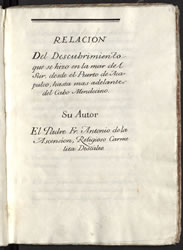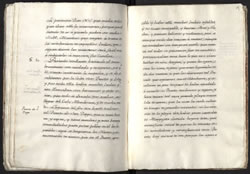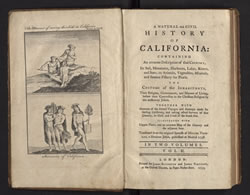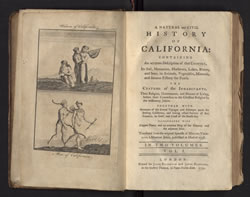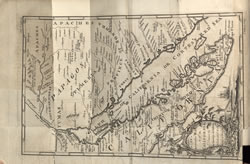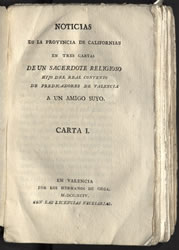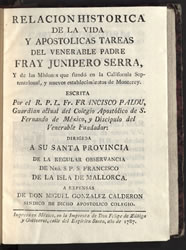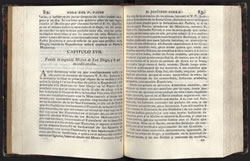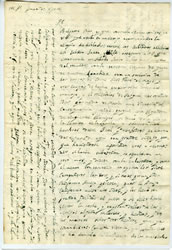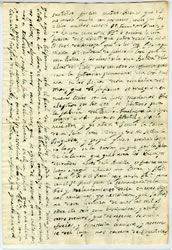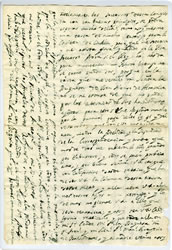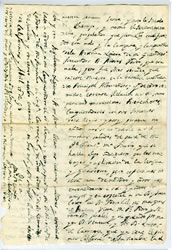
When Cabrillo entered San Diego harbor he encountered a local native population numbering roughly 20,000 people. Today San Diego County contains five distinguishable American Indian groups: Luiseno, Cahuilla, Cupeno, Kumeyaay, and Northern Diegueño. Franciscan friars, led by Junípero Serra, forcefully incorporated Alta California’s native population into Spanish rule through the establishment of 21 missions. Serra founded the initial nine missions, including the first, San Diego de Alcalá in 1769. Spaniards often extolled the virtues of the mission system, considering it a useful and necessary institution to the conversion of the local Indian population and the development of self-sufficient economies. However we know little about what indigenous peoples thought about missions or Spanish priests and settlers. The majority of writings from this period, letters, reports, and ethnographic accounts, were produced by religious and colonial officials. Native perspectives, as the following texts illustrate, remain absent from the history of early San Diego.
Antonio de la Ascensión was one of three friars to accompany Sebastian Vizcaíno on his 1602-1603 exploration of the California coast aboard the San Diego. This eighteenth-century manuscript copy offers one of the earliest accounts of the Californias. His description of the local population illustrates the static views of native peoples –“friendly” and “warlike”—typical of religious correspondences and travel journals from this period and the apprehension of indigenous peoples to the colonial newcomers.
The indigenous populations of the Americas had intrigued Europeans since Columbus’ first reports in the 1490s. This 1759 book is the first English edition of the Jesuit missionary Miguel A. Venegas’ description of the geographic features and indigenous inhabitants of California. Illustrators who had never been to the Americas or seen a native person often drew upon romanticized renderings to accompany their texts, such as the four images produced for this edition.
Much of what we know about native peoples comes from accounts of religious custodians and observers. In their frequent correspondences with colleagues and superiors they gave ethnographic details of the native peoples in their charge. Sales’ book reminds us that California’s “Indian” population encompassed a diverse group of peoples. In this section, he comments on the region’s numerous and distinct native languages although initially “some [Spaniards] thought only two distinct languages” existed in the province. Actually, 120 different indigenous languages existed in the area that became the state of California during this period.
Father Francisco Palou was a close companion of the Franciscan friar Junípero Serra and his biography provides critical information on Serra’s life. The implementation of the Christian religion through parishes and missions was a prominent feature of empire building in Spanish America. In 1769, Serra founded the first of Alta California’s twenty-one missions, San Diego de Alcalá, to congregate and convert the local indigenous population. Mission living imposed new lifeways and practices that were at odds with those of native peoples, often leading to hardship and resistance among the greater indigenous population.
This manuscript document represents one of the many letters written by Spanish missionaries to their superiors. Juan María de Salvatierra wrote on April 17, 1698 of the arrival of much needed supplies and of the fierce battle between Spanish forces and the local indigenous population at the Loreto Mission in Baja California. His letter reminds us that many native peoples actively resisted Spanish rule and mission living.
